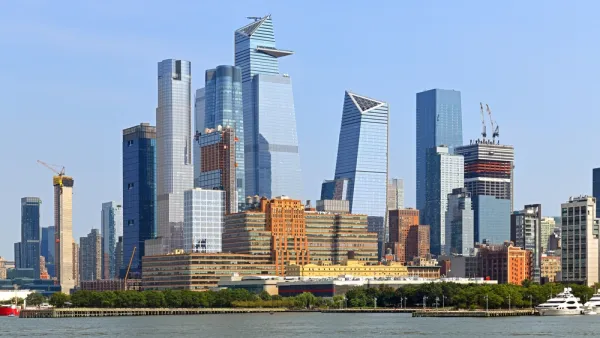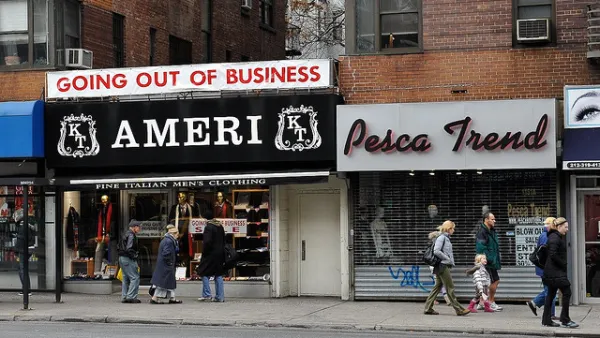For a city famous for high cost of living, incredible demand for housing, famous examples of gentrification, and political pressure to build, New York City is lagging behind the volumes of residential construction approved in comparable cities.
According to an article by Laura Kusisto and Eliot Brown, "the number of units authorized in New York City through building permits remains well below levels before the market crashed in late 2008, according to U.S. Census Bureau figures."
"In New York, permits for 17,995 new housing units were issued in 2013, slightly more than half the nearly 34,000 units authorized in 2008 and below the number approved for 2002."
Kusisto and Brown cite San Francisco, Boston, Washington D.C., and Seattle as cities that are issuing permits at pre-crash levels—San Francisco, in fact, issued almost twice as many permits in 2013 as it did in 2005.
The explanation for the sluggish building industry, according to real-estate analysts and developers mentioned in the article: "a combination of factors they say have made New York an increasingly inhospitable place to build housing."
Stephen Miller, writing for New York YIMBY, provides a different explanation than the traditional arguments of "high land costs, high construction costs, overuse of landmarking." Instead, Miller suggests we look " far beyond the gentrifying fringe" for the real cause of New York's tepid rebound. "Put simply," writes Miller, "New York City’s small builders have been nearly eradicated. The segment of the market that normally produces about half the city’s new building stock has all but vanished."
FULL STORY: Residential Construction in New York City Lags

National Parks Layoffs Will Cause Communities to Lose Billions
Thousands of essential park workers were laid off this week, just before the busy spring break season.

Retro-silient?: America’s First “Eco-burb,” The Woodlands Turns 50
A master-planned community north of Houston offers lessons on green infrastructure and resilient design, but falls short of its founder’s lofty affordability and walkability goals.

Delivering for America Plan Will Downgrade Mail Service in at Least 49.5 Percent of Zip Codes
Republican and Democrat lawmakers criticize the plan for its disproportionate negative impact on rural communities.

Test News Post 1
This is a summary

Test News Headline 46
Test for the image on the front page.

Balancing Bombs and Butterflies: How the National Guard Protects a Rare Species
The National Guard at Fort Indiantown Gap uses GIS technology and land management strategies to balance military training with conservation efforts, ensuring the survival of the rare eastern regal fritillary butterfly.
Urban Design for Planners 1: Software Tools
This six-course series explores essential urban design concepts using open source software and equips planners with the tools they need to participate fully in the urban design process.
Planning for Universal Design
Learn the tools for implementing Universal Design in planning regulations.
EMC Planning Group, Inc.
Planetizen
Planetizen
Mpact (formerly Rail~Volution)
Great Falls Development Authority, Inc.
HUDs Office of Policy Development and Research
NYU Wagner Graduate School of Public Service





























